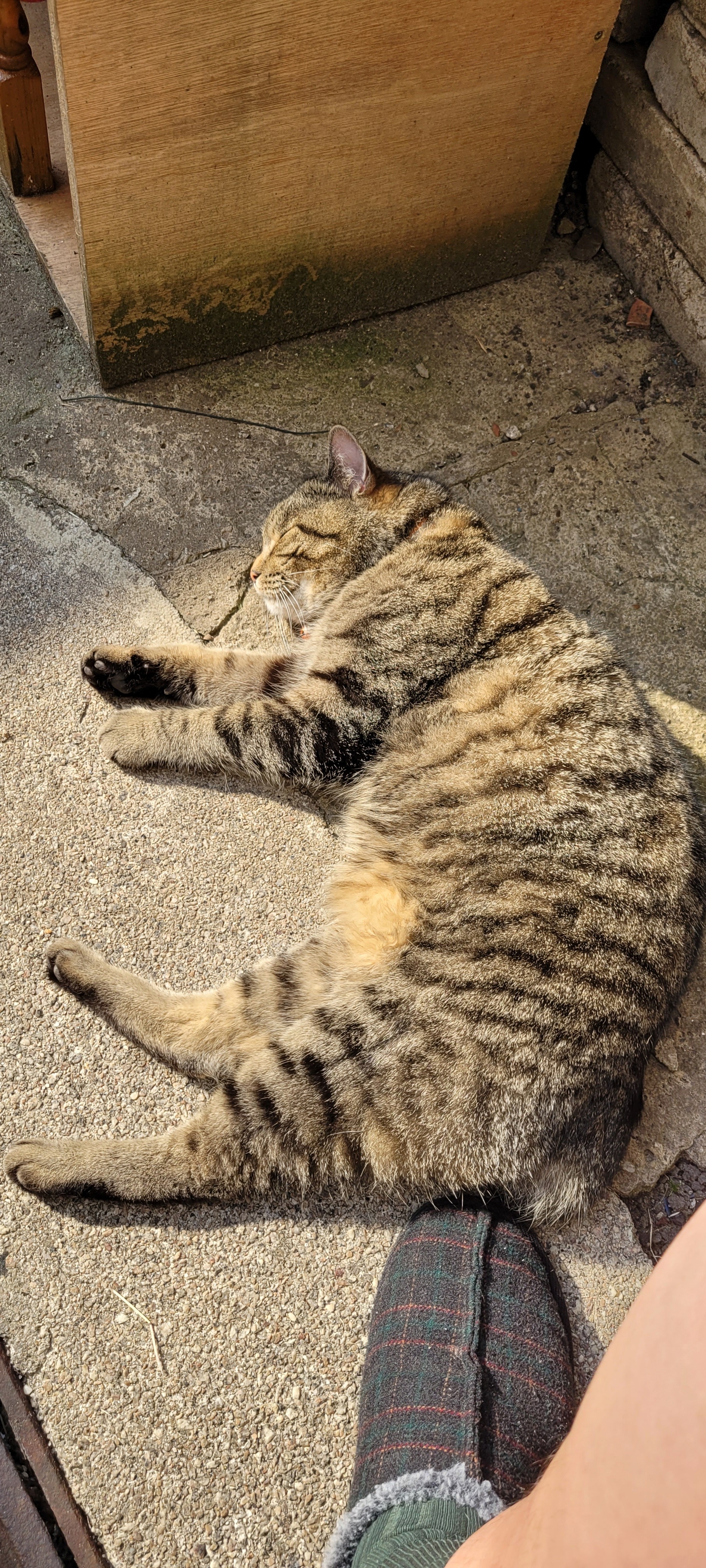That’s pretty much it, after several months, maybe even a year of wanting to take the leap, a couple days ago I finally did it. I just wanted to share this cuz I think it’s an absolute win, and I guess just see if anyone has any general advice to keep in mind during the process. I ended up choosing Fedora, right now I’m dual booting while I’m still in the process of finding software alternatives and getting everything set up, but trying to minimize my use of windows as much as possible, and so far I’ve been loving it. I love this community and I just wanted to thank everyone that has given any advice or suggestions in the past, i’m really excited about this and grateful that I could get to this point.
Originally read ‘from Linux to Windows’ and I was like, ‘What?’
Hey guys, my Dad was always a neck bearded Unix admin so I’ve grown up my whole life on FreeBSD, then moving over to Gentoo during my teen years.
I’m starting to have thoughts about switching to Windows given that’s what my new job uses, but I couldn’t find any instructions on compiling Windows outside of very outdated releases like 2000. Also, does anyone know if emacs and htop are compatible, as those are my most used applications?
… but I couldn’t find any instructions on compiling Windows outside of very outdated releases like 2000.
Damn! I was hoping to do it with Windows 7. Looks like that ship is doomed as well.
This can happen with people that refuse to learn!
I almost stopped reading at the first four words, tbh.
That would be a wild experiment.
One of my friends did this. No clue how you can go from Arch back to windows… just wow. I found that insane.
The best piece of advice I was given, that I seldom see repeated is this: learn how the filesystem is structured.
It makes everything else easier
I second this. Also, taking time to partition correctly for your purpose, can make disto hopping easier.
I think partitioning was one of the first skills I learned and the one I took most for granted. I had started on Arch cause I wanted to be cool and I liked arduous things, but I just ended up reading on LUKS, TPM, LVM, mdadm, etc. and different ways to set up your partitions. I never really took time to appreciate past me for learning it lol
This is very good advice
What the shit - this is how I learn ‘cd’ without parameters takes you home?!?!
The amount of times my dumb ass has typed “cd ~/.” Or something stupid instead of a simple cd… Gaht dang
-
It’s not a race, take your time to read and understand what is what and how things are functioning together.
-
Enjoy your stay, it’s going to be your next home, take care of it; make it beautiful, make it efficient, make sure to get rid of all what is irritating you.
-
Start with the minimum and build from there.
-
And, FFS, make backups ;)
And, FFS, make backups ;)
Here’s a good tutorial for an easy to use backup solution: https://www.youtube.com/watch?v=W30wzKVwCHo
-

- Always keep a live USB of your distro handy
- Don’t ignore the terminal, you’re doing yourself a major disservice if you do. Terminal is life
- The ArchWiki isn’t just for Arch users
Don’t be afraid to think for yourself.
You’re just using a computer. It’s not that complicated or religious.
i always do have a distro live USB in my bag at all times. you never know who gets interested in the question “which distro do you use?”
I used to, but when someone finally got interested, the usb media was so outdated, that I had to download and write a new iso :D
Carry a dual USB A/USB C drive. You then flash distros from your phone. Distros on the fly!
Thanks for the tip, but my phone still uses micro usb lol
Bruh
Congrats! Just keep at it, Fedora is stable.
It gets easier with every solved problem!
I made the switch in 2010.
I dual booted for a while, one day I realised that I hadn’t booted into windows for 3 months. At that point I reinstalled, no more dual booting. I haven’t looked back.
I keep a windows VM, currently has Win10 installed, I haven’t had to use it in about 3 years.
My advice is, keep dual booting. One day you’ll realise that booting into windows feels like a chore, you haven’t done it in months, so why keep it around…
its amazing how nice it is now and makes sense for most people. I should have way before this but it was a thing with my wife. still can’t get her to take the plunge though.
For some of the last really stubborn pieces of software that kept me locked it to at least dual booting windows, I’ve found running them in bottles is working really well. Bottles has a community preset for Fruity loops Studio, but it wasn’t really working. Oh it would run, but with massive input and audio lag, most VSTs just wouldn’t work with FL in that install. What does work, is creating a bottle for gaming, and then just installing everything through the “run exe” at the bottle prefix page. After 8 years of dual booting, I finally nuked my windows installs.
Welcome. Sounds like you’re going to be very happy here. Fedora is a great choice. I love what they’re doing with atomic desktops.
Lessons learned when switching:
Some things I didn’t expect just work differently on Linux and it took time to figure out those differences. For instance, a change to a network interface config on Windows usually takes effect when you hit the “OK” button. Linux requires toggling the interface for that change to take effect. That one took me a couple of frustrating hours to figure out. There are lots of other examples like this so keep it in mind if things aren’t working as you expect.
Trying to do absolutely everything on Linux right away was a mistake. I started switching back to Windows for quick tasks and then learning how to do those tasks on Linux when I could spend a few minutes figuring them out. Over time I spent more and more time running Linux and one day realized I hadn’t started Windows in months.
In addition to (or instead of) dual booting, create a virtual machine to allow you to use what you need in either OS without rebooting.
Lastly, if you find that you’re spending a lot of time fixing OS problems don’t be afraid to try something else. Haven’t spent much time with Fedora, but I use Mint daily because I don’t have to fuss with the OS much. Others in my household have more problems with Windows 11.
For instance, a change to a network interface config on Windows usually takes effect when you hit the “OK” button. Linux requires toggling the interface for that change to take effect.
That’s not a Linux thing so much as a your particular Linux distribution thing. Different Linuxes can have vastly different user interfaces for various things. Some distributions even go out of their way to be more similar to Windows.
Hmm, every distro I’ve tried (and I’ve tried a few) required a interface bounce. Maybe I just missed the ones that don’t.
Before you know it, it will be over a decade post-Windows like me. This week I have been trying to get a Linux phone to a satisfactory state to leave the mobile duopoly behind…
I won’t deny, it’s refreshing to see posts like these, and I’ve seen a few of them around the web. Perhaps we’re really going to slowly see some positive change in the tech world.
Good luck, @bpt11@sh.itjust.works and welcome to the community!
If you play PC games (and already familiar with Fedora), check out Bazzite. The whole immutable thing is an adjustment, but I really like it.
Though not really an adjustment from Windows, more of an adjustment if you’re coming from another Linux distro.
definitely on board with bazzite for gaming computer. it seems to do well with everything else I throw at it also
I’ve been running it on my main PC (framework laptop) for I dunno 6 months now? And it’s been great.
Distrobox is dope, and “rpm-ostree” is super useful.
Aside from that, it’s incredibly stable. And games pretty much just work.
I’ve seen people say that “it’s not for tech people, but good for newbies,” and I have to disagree. Just because it works most of the time without having to tinker (but you can if you want) doesn’t mean it’s for noobs… That’s how your PC is supposed to function.
Ban-test
You good.
I would warn against using an atomic distro for newbies that want a bit more than Internet surfing and gaming.
Handling such distros well requires specialized knowledge around them in particular, and not all common Linux solutions will fit.
All of Linux requires specialized knowledge. Immutable just takes different knowledge.
The real kicker with that is just that you can’t always just follow instructions you find online. Usually you can, as long as you’re doing them in a Distrobox, though.
I went with immutable as a newbie, and I think it’s great. It feels like getting in on the ground floor of the future.
Yeah, essentially that. But most advice on Linux is for non-immutable distros, so it’s better to start with the classic and then choose what you see fit.
Keep a cloud-synced notebook of bugs, ideas, and fixes. That way, you can help people in the future or know how to do things for yourself if you ever need to reinstall. I have notes for fixing things like my keyboard layout on GDM/SDDM or how to set up certain software in a privileged
podmancontainer.Yeah i keep a nextcloud synced Obsidian vault and I have a entry for fresh installing my popos system with a list of all the software I install and from where with an Obsidian link to a note of each individual software if it needs more info, like config settings of rapid photo Downloader so that my photos are always imported and named the same or how to add the repository for tabby so that it updates along with all the stuff when I do apt update















